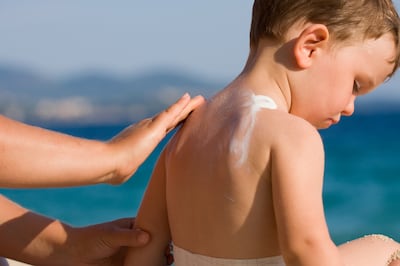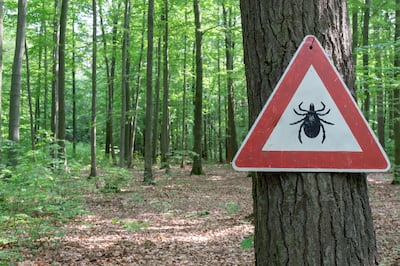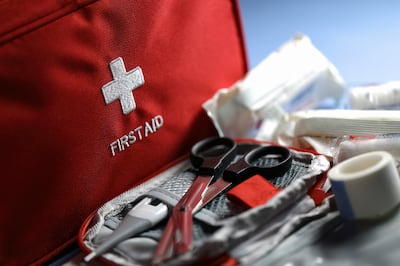
After months of short days and cold winds, the summer has finally arrived and with it the prospect of family picnics, afternoons at the beach, garden barbecues and lazy days. There is a general feeling of holiday in the air.
But while we’re all hoping for some fun in the sun (in between the showers), a rise in temperature doesn’t mean an increased resistance to illness as many of the ailments which plague us during the winter months are still lurking about.
So to help ensure you and your family enjoy a safe and healthy summer, we have asked some experts for their advice on how to keep well.
Sunburn
According to the HSE, research has shown levels of self-reported childhood sunburn in Ireland are high with nearly 90 per cent of 10-17 year olds saying they have experienced sunburn in their lifetime. Children’s skin is more vulnerable to damage from the sun’s UV rays (ultraviolet radiation) and this damage is cumulative, adding up over a lifetime.
At home with Brendan Courtney by the sea in Wicklow: ‘I wanted to simplify my life’
Wealth gap tensions: ‘My friends don’t have to budget like me. A round of cocktails scares the s**t out of me’
Alison Curtis: ‘On arriving in Ireland I was stumped at how men and women didn’t interact’
‘I’m deeply unhappy but I think leaving my husband will destroy him’
“The risk of sunburn and skin damage [and future risk of skin cancer] will vary according to skin type – children’s skin is particularly vulnerable, as are those with fair or freckling skin,” says a HSE spokesperson

“The amount of UV radiation varies with the time of year and time of day but you can check the UV index on www.met.ie. In Ireland, it will usually reach above a UV index of 3 [when it is particularly important to protect skin] from April to September, especially between the hours of 11am and 3pm but if travelling overseas, UV from the sun will increase the closer you get to the equator.
“For children up to one year old, it is best to keep them in the shade and wear clothing which covers their skin when outdoors. You can protect your family’s skin [and reduce risk of sunburn] by following the Sunsmart 5 “Ss”.
- Slip on clothing – to cover up as much skin as possible.
- Slop on broad spectrum (UVA/UVB) sunscreen with a sun protection factor (SPF) of at least 30+ for adults and 50+ for children.
- Slap on a hat with a wide brim.
- Seek shade and keep babies and children out of direct sunlight.
- Slide on sunglasses with UV protection.
Common ailments
Tomás Conefrey says the most common ailments are hay fever and skin allergies. “From May onwards we get many requests for antihistamine tablets, eyedrops and anti-allergy creams – any children from two years on can be treated with an antihistamine available over the counter without a prescription,” says Conefrey (of Conefrey’s Careplus Pharmacy in Pearse Street, Dublin).
“Insect bites can be treated with an antihistamine and antihistamine/anti-itch cream such as Anthisan or Eurax cream; 1 per cent hydrocortisone cream is useful also, although I recommend starting with Anthisan first.
“For sunburn, we usually recommend aloe vera gel which is really useful for hydrating the skin. The pain from the sunburn can be treated with paracetamol or ibuprofen. To prevent sunburn I advise to stay out of direct sunlight between 12 and 3pm, cover up as much as possible, use a factor 50 sun protection [especially on the face and back of the neck] and reapply every three-four hours when outside, and wear a wide-brimmed hat to keep the sun off your head and face.
“Dehydration can be treated by taking an oral rehydration sachet such as Electrosal or tablets like ORS. I recommend people to stay hydrated and sip water – but don’t knock a load back – just take it regularly during the day.”
Healthy eating
For many people, summer is all about barbecues, and research from Safefood found that 43 per cent admitted to burning barbecue meats on the outside, while they were still raw in the centre – 50 per cent said the hardest part of barbecuing was not burning the food, while 45 per cent said knowing when the meat was thoroughly cooked was very difficult.
Dr Linda Gordon, chief specialist in food science at Safefood, says undercooking foods such as sausages, burgers and chicken can lead to food poisoning. “For a healthy adult, the chance of getting sick depends on what kind of bacteria, and how many of them, are present in the food,” she says. “Some people are especially vulnerable to food poisoning, if their immune system is not as effective. These include the very young or elderly, and those who are sick or pregnant. In these cases, lower numbers of bacteria may be enough to cause illness.
“So, separate raw and cooked foods during both storage and cooking and never let raw meat come into contact with ready-to-eat food. Given the right conditions such as warmth, moisture and time, bacteria can easily grow on food and multiply very quickly. That’s why food not properly stored or thoroughly cooked can cause food-borne illnesses. So always wash your hands before and after handling and eating food, after visiting the toilet or playing with pets or animals.
“Make sure that food is thoroughly cooked in order to destroy any harmful bacteria which might be present – using a meat thermometer will help you get it safe and tasty every time. Take the food off the heat and pop the thermometer into the thickest part of a burger, sausage or chicken. If it reads 75 degrees Celsius, you’re good to go.
“Keep perishable foods cool in order to prevent harmful bacteria from growing and aim to keep your fridge at 5°C or below. If you’re on a picnic, keep foods like prepared salads, cold meats, quiches, coleslaw, potato salad and dairy products in a cool box until you need them. Chill cooked food in the fridge before you leave and use plenty of ice, even frozen bottles of water, in your cool box.”
Food poisoning
Dr Gordan says there is very little which can be done to stop food poisoning once it has occurred, so prevention is the best medicine, but she does have some tips to make it less of an ordeal. “If you do get food poisoning, you lose an enormous amount of fluids so be sure to drink plenty,” she says.
“Pregnant women, young children, the elderly and people with serious medical conditions are at an especially high risk. Take frequent sips of water, apple juice or an isotonic energy drink with electrolytes. You should also contact your doctor.
“If you suspect you are sick because of food you bought and ate, report the incident to the local environmental health officer in your HSE region in Ireland or your local district council in Northern Ireland. This can help prevent wider food poisoning outbreaks in the community.”
Lyme disease
People are more likely to spend time outdoors in the summer and the HSE advises us all to try to protect ourselves from tick bites as this will help to prevent Lyme disease – this includes ramblers, campers, mountain bikers, people who work or walk in woodland, parkland and heathland, especially in grassy areas. “Ticks are present everywhere in Ireland, including both urban and rural areas, and are active from spring to autumn,” says a spokesperson for the HSE. “They are tiny spider-like creatures which feed on the blood of humans, animals and birds, and are more numerous and active from April onwards.

“Ticks will bite adult humans most commonly on the legs and arms, but they can bite on any part of the body, especially warm and sweaty parts not covered by clothing. In children, ticks are most likely to bite around the head and neck. These are the areas to cover up and protect.
“But tick bites can be prevented by wearing long trousers, a long-sleeved shirt and shoes as well as a hat and by tucking in hair. Using an insect repellent, preferably containing DEET, is also helpful as is checking skin, hair and warm skin folds (especially the neck and scalp of children) and clothing or outdoor gear for ticks, after a day out. Also check your pets. Remove any ticks and consult a GP if symptoms develop.”
Most cases of Lyme disease are very mild and many infected people may not have symptoms. The most common sign of infection is a skin rash. However, in some cases the infection can be more severe, leading to serious nervous system, heart and joint disease.
Anyone with concerns should seek medical advice immediately.
First aid kit
It’s always important to have a well-stocked first aid box and Conefrey offers his top tips of essentials. “My first aid kit list would contain a small amount of plasters of different sizes, a few small and medium size dressings, a tube of antiseptic cream and an antiseptic powder such as Rowarolan powder to dry up cuts,” he says.

“I would also advise antihistamine tablets or liquid depending on the children’s ages, an antihistamine or anti-itch cream such Anthisan or Eurax cream and some liquid paracetamol and ibuprofen. It is also important to have antiseptic wipes, factor 50 sun protection and after sun lotion or Aloe Vera gel.”
When to see a doctor
There are many complaints which your local pharmacist can help with, but sometimes it is better to seek medical advice from a doctor.
“Your pharmacist can help with upset stomach and/or diarrhoea and minor cuts and grazes that are superficial – also hay fever in adults and children over two years,” says Conefrey. “But if they are under two, they need to go to the GP. Mild sunburn can be treated by the pharmacist but if it is moderate to severe, they will need to go to A&E or to a doctor. Also when it comes to severe dehydration or if young children are dehydrated, it is important to go to A&E.
“With regard to allergic skin reactions, if there is difficulty with breathing or tightness of the throat, then the patient should go to the GP or A&E. And if they need stitches I refer them to a HSE minor injury unit.”












